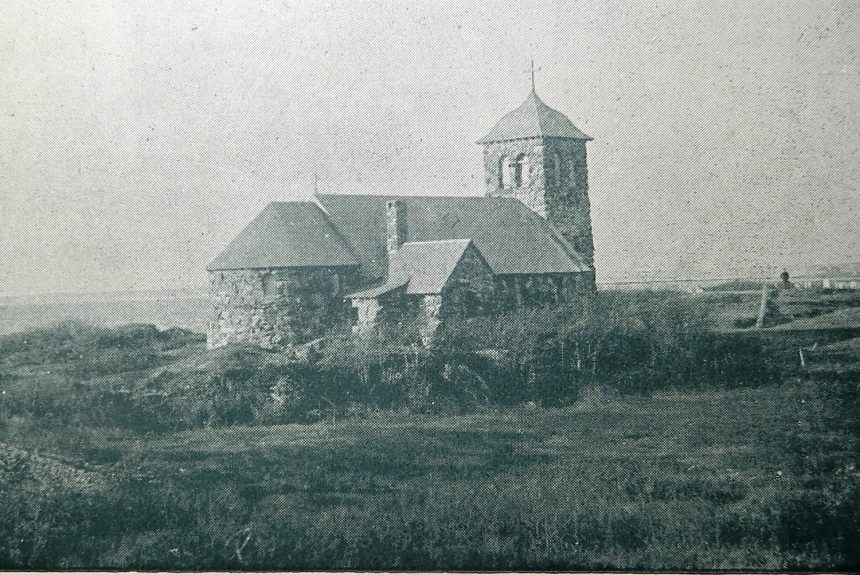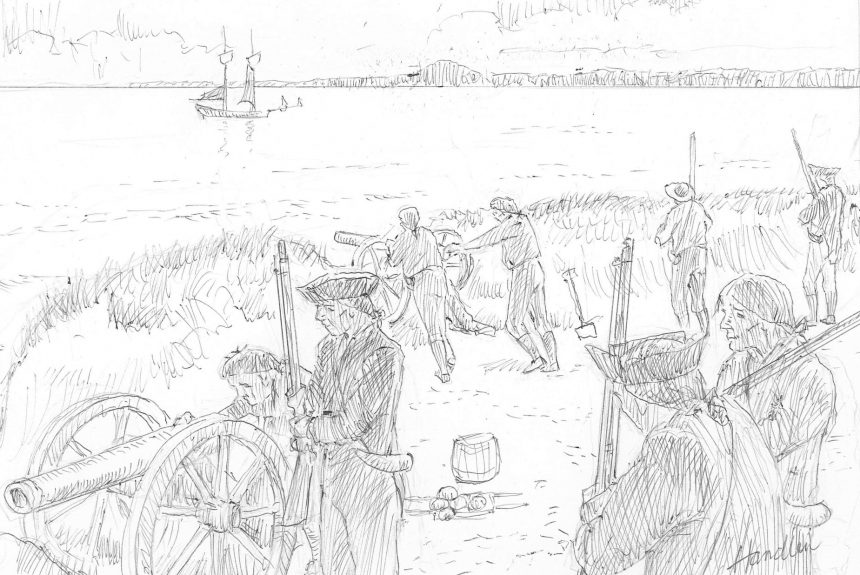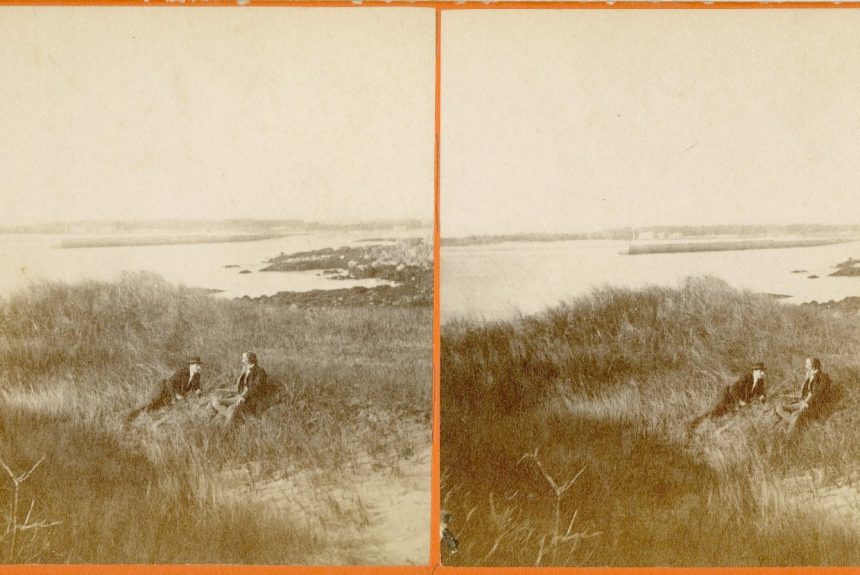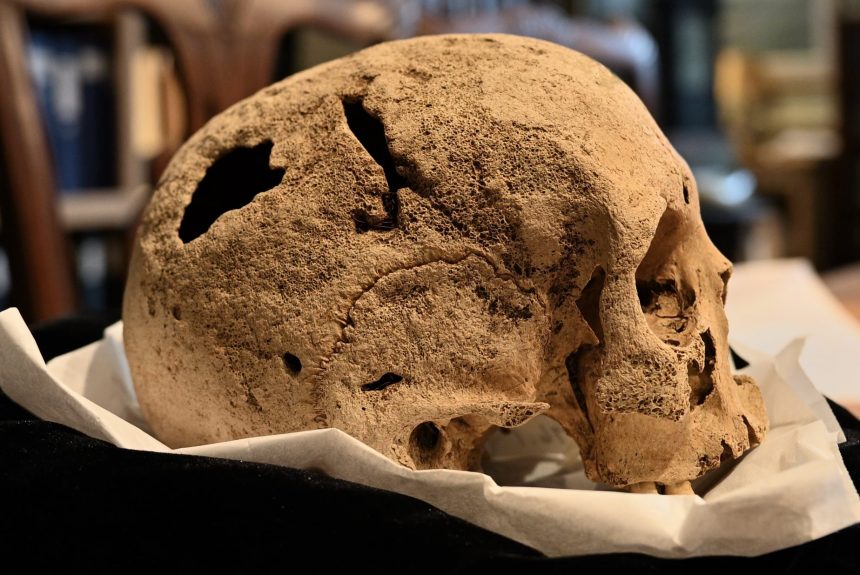Atwater Kent
Wealthy Philadelphia inventor, Atwater Kent owned the house next door to St Ann’s by-the-Sea in 1919. When he learned that there was a movement afoot by some of his history-loving neighbors to secure the earthen ramparts of an old War of 1812 fort on the lot adjoining his property and turn it into a public park, Kent quickly purchased the lot to end the conversation. A notice was subsequently posted in the September 1919 issue of Turn ‘o the Tide reassuring the citizens of Kennebunkport that the historical site would be safe in the famous inventor’s hands.
The fortification had been quickly dug in response to the threat of British Navy vessels coming ever closer to the mouth of the Kennebunk River after the HMS Bulwark attacked Biddeford Pool on June 16, 1814. The fort and a battery at Butler’s Rocks, where the Nonantum Lighthouse now stands, were manned by local volunteers until five companies of the Limington Militia relieved them. Ships were moved up the river and many of the inhabitants sent their fancy furniture and other valuable effects out of town. The Kennebunk Bank had its gold and silver removed to an undisclosed inland location. Arundel’s show of force apparently deterred the HMS Bulwark because she sailed on without having fired a shot.
In 1919, mounds of earth with apertures left open for canons remained in relatively good condition thanks to the sea grass that had grown up around them. A shallow cemetery adjacent to the fort was the resting place for the Jeremiah Smith family. Before anyone knew what was happening, Atwater Kent had leveled the fort that stood where St. Ann’s outdoor chapel is now. He also had the remains of the Smith family moved to The Landing Cemetery and The Arundel Cemetery to make way for a new sweeping lawn. His neighbors nicknamed the wealthy cottager “the grave robber”.
In early October 1919, workmen at the Point tackled a mound of earth between the cemetery and the fort. They uncovered a few very old bones and two skulls of white men that had clearly met their end during the French and Indian Wars.
The remarkable discovery was reported in the Biddeford Weekly Journal on October 10, 1919. The reporter considered the discovery of special interest to students of the earliest history of Maine. He wrote,
“Workmen came across, at a depth of about six feet a skull of a white man imbedded in which was an Indian arrowhead, the weapon sticking out from the top of the skull just as apparently it had been left when the victim was buried after being slain by a bow and arrow. Equally remarkable and interesting was another find in almost the same spot, which was that of a skull showing plainly that the man had been scalped. The very tip of the victim’s head had in this case been cut off as clean and smooth as the most skillful scalper could do the job.”
The Kennebunkport Historical Society has a human skull in our collection that is described in the catalog as a skull found by Atwater Kent at Kennebunk Point. Documents from the Louis T. Graves Library, the donor, further explain that the skull was examined there in July 1975 by two young student archaeologists who were conducting a state survey on Native American artifacts and sites. The students said that the skull was that of a young adult white man based on the cheek structure and that the arrowhead which had originally accompanied the skull but was lost before the Historical Society took possession of it, probably entered through the long narrow slit in the skull.








Leave a Reply